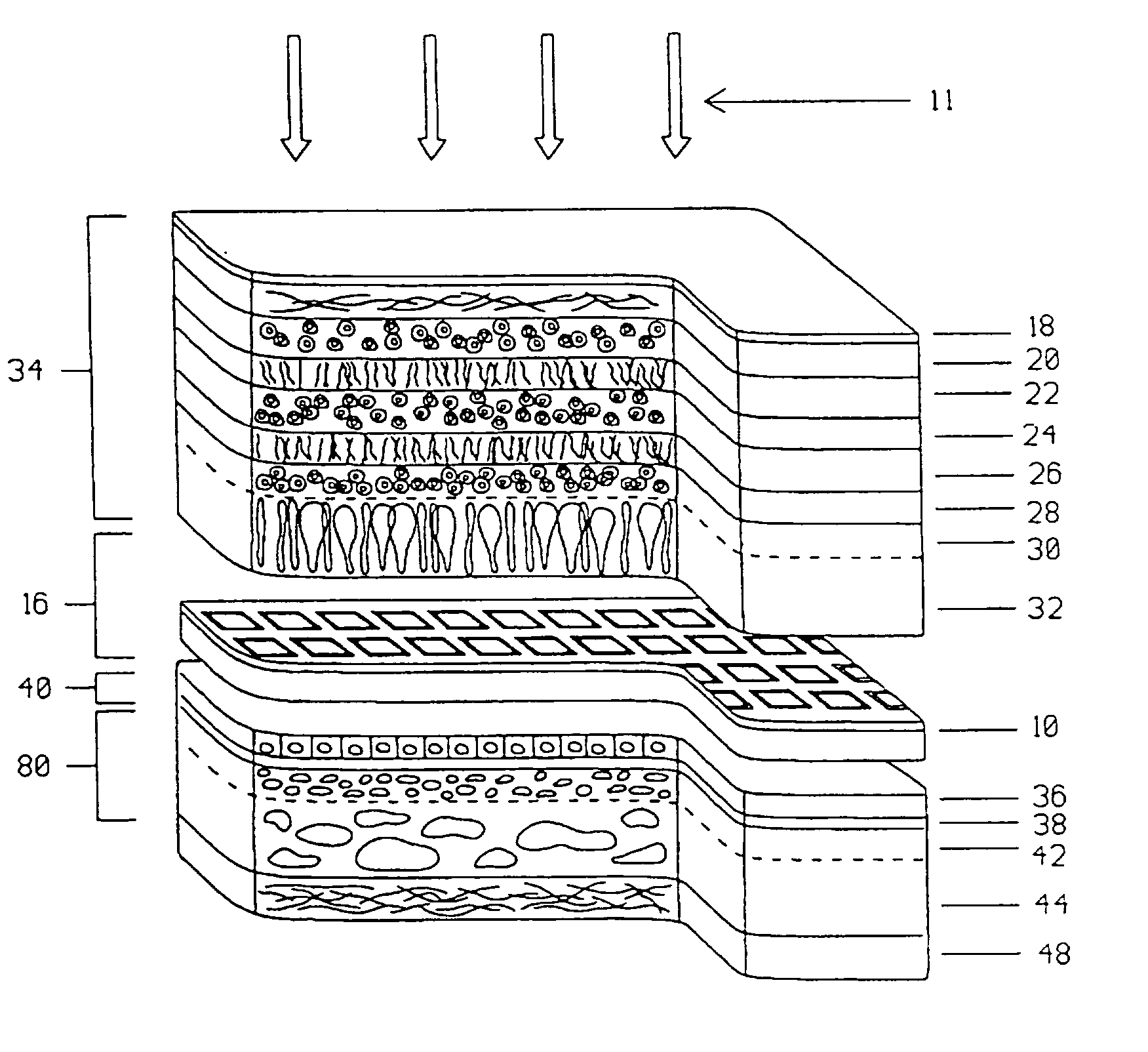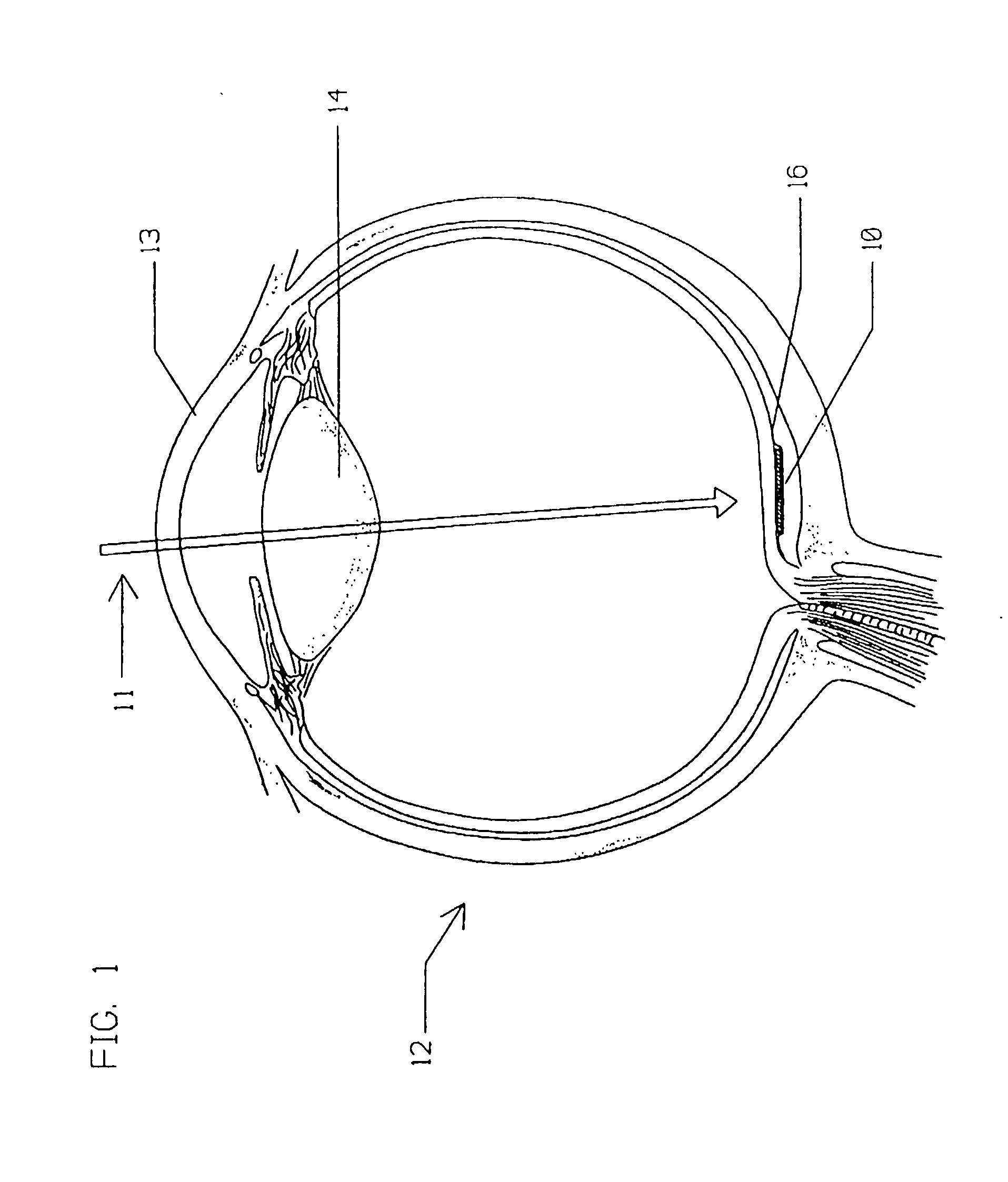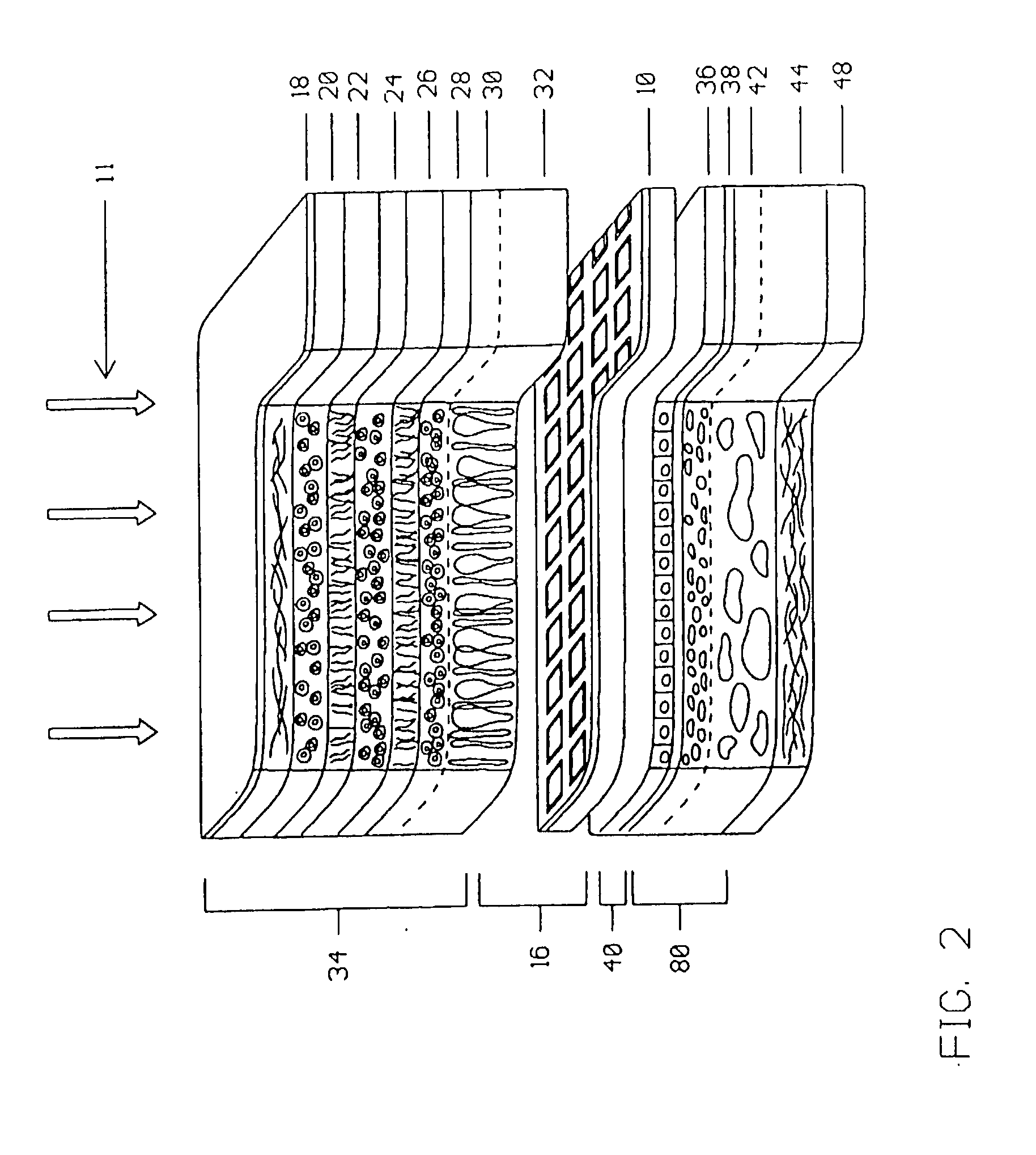Multi-phasic microphotodetector retinal implant with variable voltage and current capability and apparatus for insertion
a multi-phasic, retinal implant technology, applied in the direction of radiation control devices, artificial respiration, therapy, etc., can solve the problems of preventing an blocking the discrete ion migration between the photoreceptor and inner retinal layer, and unable to achieve acceptable image resolution capability, etc., to achieve greater amplitude
- Summary
- Abstract
- Description
- Claims
- Application Information
AI Technical Summary
Benefits of technology
Problems solved by technology
Method used
Image
Examples
Embodiment Construction
[0025] As described in further detail below, the present invention relates to a retinal implant that can vary its stimulation voltage polarity and also produce higher stimulation voltages and currents to the retina compared to retinal implants of the prior art. This higher and adjustable stimulation voltage and current allow for higher voltage and / or current stimulation thresholds that may be required to stimulate severely damaged retinal tissue. Although a preferred embodiment of the retinal implant disclosed below may be used on its own, without the need for any special stimulation apparatus positioned outside of the eye, in another embodiment the implant stimulation voltages and currents of the present invention are adaptable to the specific needs of a retina by the addition of regulated amounts of different wavelengths of projected images and background illumination light provided by a headset device that projects the different wavelengths into the eye. The use of this headset a...
PUM
 Login to View More
Login to View More Abstract
Description
Claims
Application Information
 Login to View More
Login to View More - R&D
- Intellectual Property
- Life Sciences
- Materials
- Tech Scout
- Unparalleled Data Quality
- Higher Quality Content
- 60% Fewer Hallucinations
Browse by: Latest US Patents, China's latest patents, Technical Efficacy Thesaurus, Application Domain, Technology Topic, Popular Technical Reports.
© 2025 PatSnap. All rights reserved.Legal|Privacy policy|Modern Slavery Act Transparency Statement|Sitemap|About US| Contact US: help@patsnap.com



